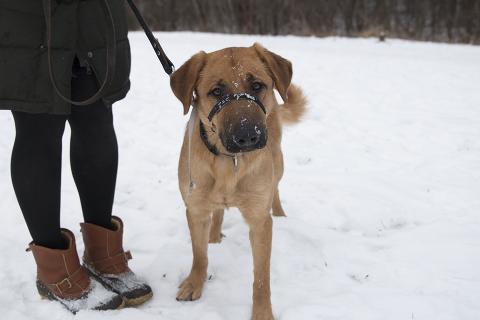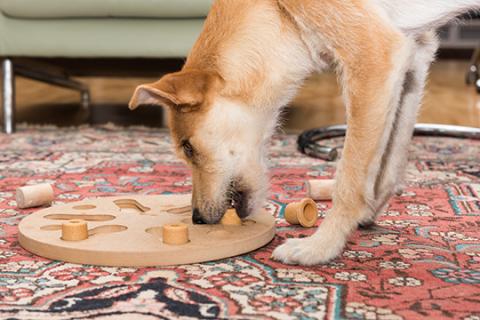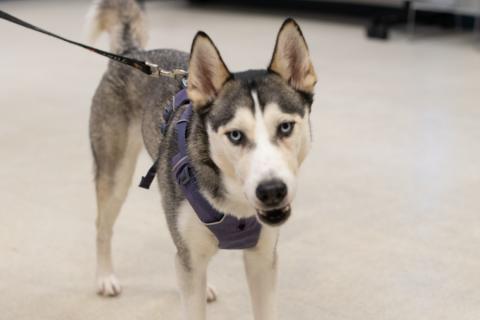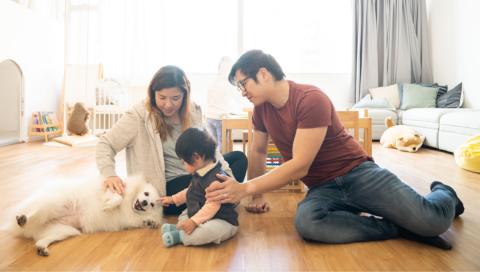
Free webinar: Raising Kids and Canines
For more detailed instruction and resources on raising kids with dogs, register for an upcoming Raising Kids and Canines hour-long webinar.
Most dog parents think of their canine companions as children. And that makes sense given fur-babies and human babies have a lot of the same needs.
They both require nourishment, physical and mental stimulation, praise, love, and lots of patience. Plus, like kids, dogs can make a family feel whole.
When it comes to young kids and dogs cohabitating, however, their needs can be a bit different. Ensuring each has the tools and rapport to safely share the same space takes practice — especially when your household includes a baby or toddler.
Whether you’re a pet-parent bringing home a new baby, or you’re welcoming a new dog into your home with children, the tips provided here and at length in our Raising Kids and Canines webinar will help you safely navigate raising kids alongside dogs.
Key components of raising kids with dogs
1. Foster a trusting relationship
You’ve likely heard (or learned by experience) that successful relationships are built on trust and mutual respect. They’re also not created overnight — they take time and effort. The same is true for relationships between children and pets.
Just like adults, it’s important for kids to learn to respect dogs both within and outside of the home. This includes teaching your child to:
- Read your dog’s body language. This is the single best thing one can do to improve the safety of dog-child interactions. Practice this skill with your child by teaching them common dog cues in advance, and verbalizing what you’re seeing during supervised interactions. You may be surprised to learn that a wagging tail does not equate to happiness, or that a dog staying very still could be indicating extreme discomfort.
- Ask for permission before engaging — and that includes asking the dog. We call this pat, pet, pause whereby a child (or adult) pats their leg to invite a dog over for affection, softly pets the dog, then pauses to allow the dog to decide whether they’d like to receive more pets or move on.
- Respect dogs’ boundaries. Children should never invade a dog’s personal space, sit, lay or climb on a dog, or steal their toys or treats. Respect is key, and we want to avoid your dog developing any negative associations with your child (or worse, acting aggressively).
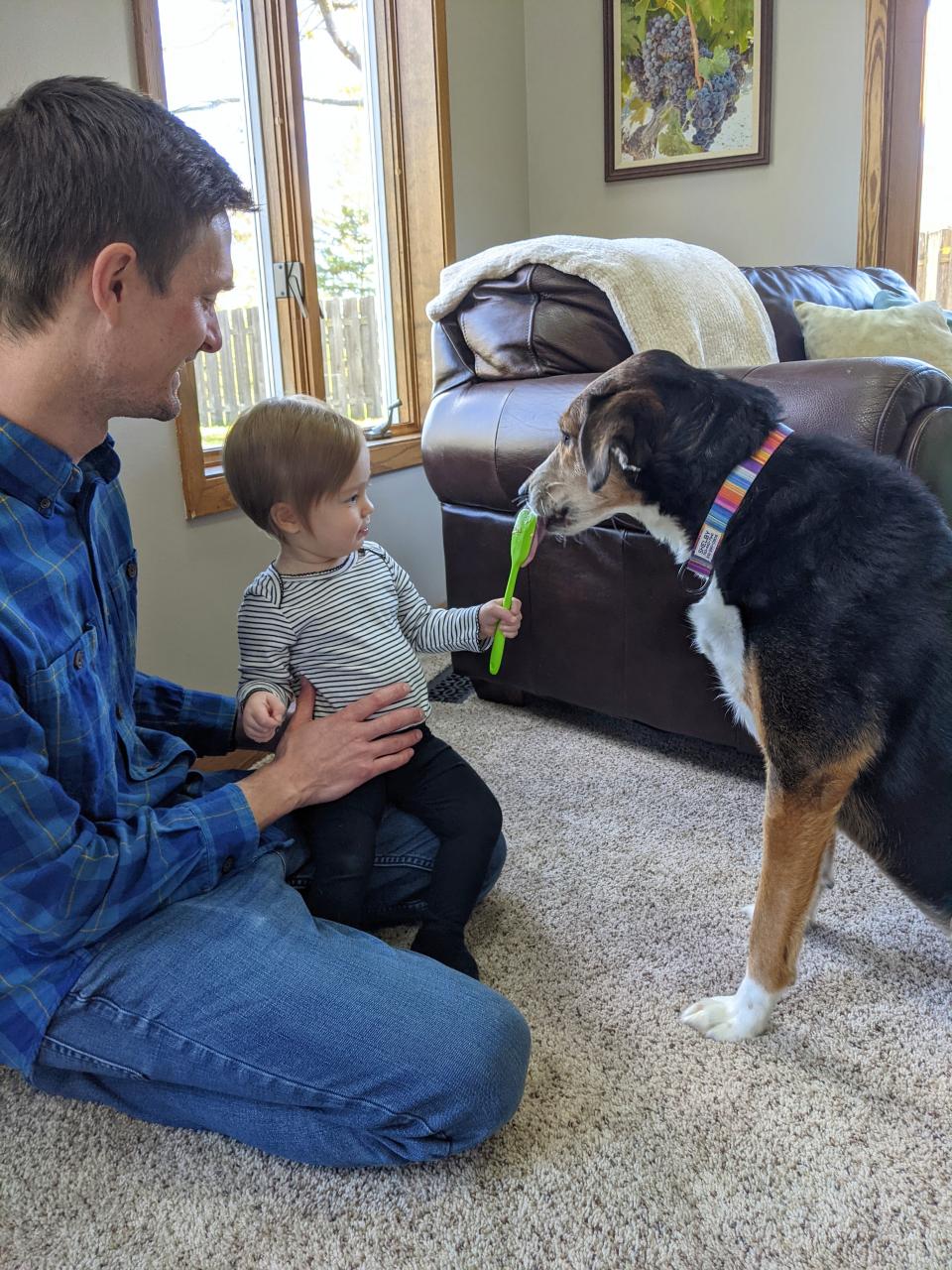
2. Manage safe play
Just as important as teaching your child what not to do with a dog is teaching your child what to do. Through supervised play, you can both demonstrate and help your child practice appropriate play while building trust.
Does your canine love to play fetch? Show your kid how to roll or throw a ball or toy for your dog. Is your pup food motivated? Help your child toss treats or offer your dog a few licks of peanut butter from a spoon.
The more your dog associates these positive experiences with your child, the more likely their relationship will bloom.
And when you’re not able to actively observe their interactions, keep kids and dogs separated with the use of baby gates or room dividers, especially when your kids are young and still learning how to share the same space as their furry friend.
3. Involve your child in dog training
Reward-based learning not only builds trust, but it also provides an opportunity for your child to deepen their bond with your dog. “I encourage people to think about training as a way to learn more about their dogs, learn to communicate effectively with them, and set boundaries as opposed to just teaching them skills,” says Katie Heathcote, Behavior and Training Specialist.
While training takes commitment up front, it’s easier than working to overcome bad habits or undesirable behaviors later — and your child can be a part of that learning process.
It’s best for parents to work on training the dog individually, though, before involving kids. Once your dog can do a skill consistently, then you can model for your child how to practice the skill with your dog and give rewards.
It doesn’t have to be complex. Work together on teaching your dog to sit, stay, or shake, or simply have your kid hide treats throughout your home for your dog to find.
What if your dog is uncomfortable with your child?
With a little practice and extra patience, it’s possible to effectively set both dogs and budding dog-lovers up to safely and successfully share the same space. However, if you find that despite your best efforts, your dog is continually uneasy, stressed, or even aggressive around your child, it’s a good time to seek support.
Katie says, “When I’m talking to a parent about a negative kid-dog interaction, I want to know whether there’s a pattern of this behavior or if it’s a one-time thing. Are there other times the dog and child can play and enjoy each other, or is this a situation where the dog never wants any contact with the child?”
If the behavior was provoked or circumstantial, there’s likely time to course-correct if addressed early. If the behavior is constant, however, it may be time to consider re-homing your dog to a house without children.
Katie adds, “It’s important to consider the dog’s quality of life. Being constantly scared in their own home, or running and hiding from kids or the noises they make is no way to live. And that’s stressful for the caregiver, too. If you’re not living your best life with your dog, your dog probably isn’t living their best life either.”
Looking for help or more information on dog behavior?
Reach out to Animal Humane Society’s Training School experts at 763-489-2217 or via our contact form, or you can explore our pet behavior resources.
